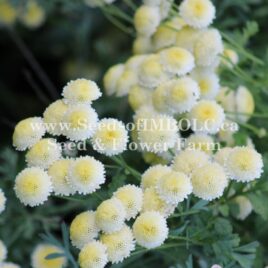OUR SEED
Showing 25–36 of 95 results
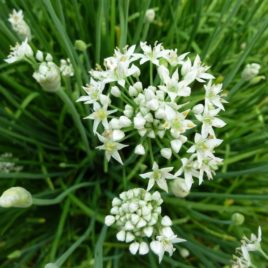
Chives – Garlic Chives
aka Chinese chives (Allium tuberosum) can be used the way you use regular chives. Distinguishable from chives by their flat, broader leaves & fragrant white edible flowers in midsummer, in the 2nd year of growth. Flowers make a great addition to bouquets. The budded flower stalks known as "gow choy" can be found in Chinese grocery stores.
Pull the florets apart and sprinkle on salads, dips, sauces, soups, stir-fries, and pizza & potato salad. Flavour is a delicate garlic, midway between garlic & onion - used extensively in oriental dishes. Good choice for those who shy away from full-flavoured garlic.
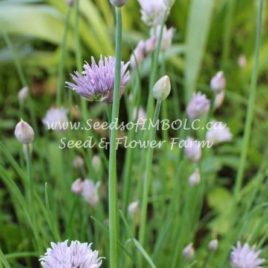
Chives (Allium schoenoprasum)
Chives have a unique, spicy flavour that's somewhere between the taste of garlic and onions in both the leaves and flowers. A relative of onions and leeks, but classified as an herb with tall, dark green, slender leaves that are hollow inside. The beautiful pale purple blooms made of tiny flower clusters are edible too.
Not only a cinch to start growing, they’re a perennial herb (zones 3 -10) —meaning they will grow in your garden for years!
Used as a garnish mostly, the promising health benefits of these alliums suggest adding them into your diet more often!
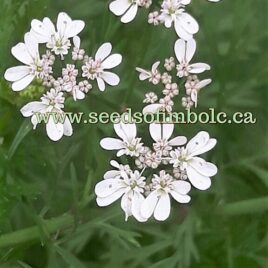
Coriander/Cilantro – ‘Caribe’
Dense bunches of aromatic dark green leaves on long-standing, bolt-tolerant plants. A lovely cilantro with nice big meaty leaves with a nice, fresh, strong flavour. High yielding over an extended period of time. Plants produce flowers that are attractive to beneficial insects.
In this part of the world tend to call the leaves cilantro and the dried seeds coriander.
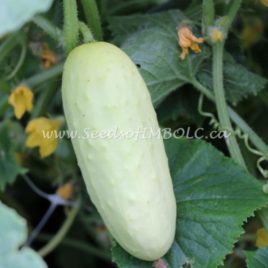
Cucumber – ‘Salt & Pepper ‘
(Cucumis sativus)The most delicious crunchy cucumber I've eaten! The sweeter, smoother little sister of Silver Slicer, Salt & Pepper has Powdery Mildew as well as Angular Leaf Spot resistance, best suited for eating fresh and pickling. Small, squat, and cylindrical, roughly 7-12 cm long. Its outer skin is thin and white (pale green) with bumps and black spikes.
approx 40 seeds
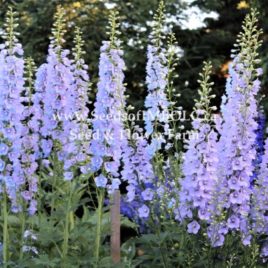
Delphinium Mix
There is nothing quite like a stand of stately Delphiniums to behold! and the hummingbirds love them too! Fresh or dried fantastic in floral arrangements! They hold their colour well when dried. 150+cm, 4-6' tall
This stunning mix provides many different colours, light & dark blue, purple & bi coloured tones.with black or white "bees" ( the middle part of the flower).
An excellent cut flower and will attract bees and butterflies to your pollinator garden.
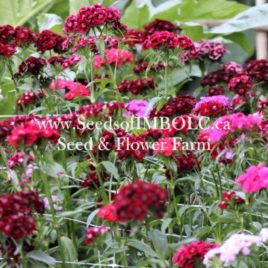
Dianthus – ‘Sweet William Mix’
(Dianthus Barbatus) So beautiful! The array of colours, including white, pink and bi-colour varieties are so charming! An irresistible, colourful, biennial, or short-lived perennial, flower with single or double blooms , blooming most profusely in the spring and summer. The plants require minimal care & give lovely, low-maintenance colour to borders, beds and containers. The flowers are edible and may have medicinal properties. Attracts bees, birds, and butterflies.
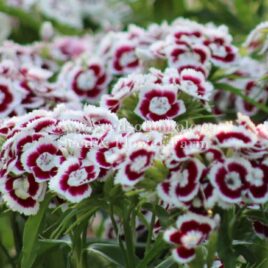
Dianthus ‘Holborn Glory’
(Dianthus Barbatus) Heirloom Sweet William with striking bi-colour flowers - raspberry-red and pure white, blooming most profusely in the spring and summer. The plants require minimal care & give lovely, low-maintenance colour to borders, beds and containers. The flowers are edible and may have medicinal properties. Attracts bees, birds, and butterflies.
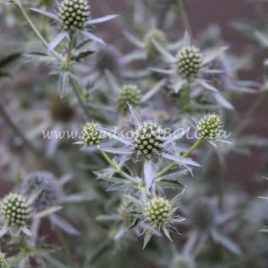
Eryngium – Sea Holly
Eryngium planum, commonly called sea holly, is a remarkable clump-forming perennial that features a summer bloom of steel-blue, thistle-like flower heads on branched stems rising from a rosette of dark green basal leaves. Attracts pollinators! Stiff, branched, violet-blue stems (to 32” tall), bearing abundant, egg-shaped, thistle-like, violet-blue flower heads, rise from each basal rosette in summer. Each flower head is a spherical-cylindrical umbel that is packed with tiny, stemless, violet-blue flowers. Summer bloom is often profuse.
Excellent for cut or dried flower arrangements.
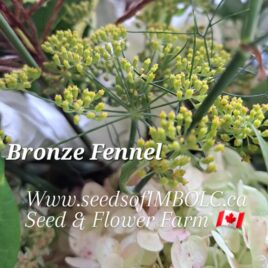
Fennel ‘Bronze Leaf’
Foeniculum vulgare dulce 'Rubrum' Elegant, copper lacy foliage bursts with delightful anise flavour & aroma.
Perennial. Host for the Swallowtail butterfly, long lasting, fragrant filler in bouquets. Ebible, tasting like anise (leaves and seeds) & medicinal. What more could you ask for?!
Similar in appearance to dill. The smokey bronze colour contrasting beautifully with the mustard yellow blooms. An aromatic herb that attracts beneficial insects!
If you follow author/flower farmer/florist Georgie Newbury at Common Farm Flowers in England you will know this is one of her favourite fillers too!
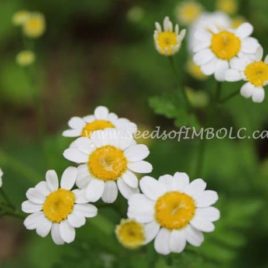
Feverfew -Matricaria
Matricaria, also known as feverfew, botanical name Tanacetum parthenium, is very cheerful, prolific branching flower, excellent as a filler in bouquets!
Long, strong stems that support abundant, 1/2–1" daisy like blooms with yellow disks and white petals. Easy to grow and harvest.
Feverfew is believed to aid digestion, and lower blood pressure. There is some scientific evidence that drinking feverfew tea, or adding a few fresh leaves leaves to a sandwich everyday, can for some people, reduce the frequency and severity of migraine headaches.
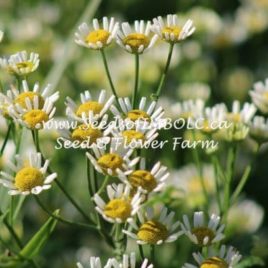
Feverfew ‘MALMESBURY’ (Tanacetum parthenium)
These curious propeller-like flowers produce stubby white tubular petals which surround the yellow disc on this unique and unusual form which produce a shimmering effect when wind moves them. The name derives from Malmesbury in Wiltshire where it was found by Martin Cragg-Barber of the Natural Selection nursery. Matricaria, also known as feverfew, botanical name Tanacetum parthenium, is very cheerful, prolific branching flower, excellent as a filler in bouquets! Reminds me of little cogwheels and is a stunning bouquet filler!
